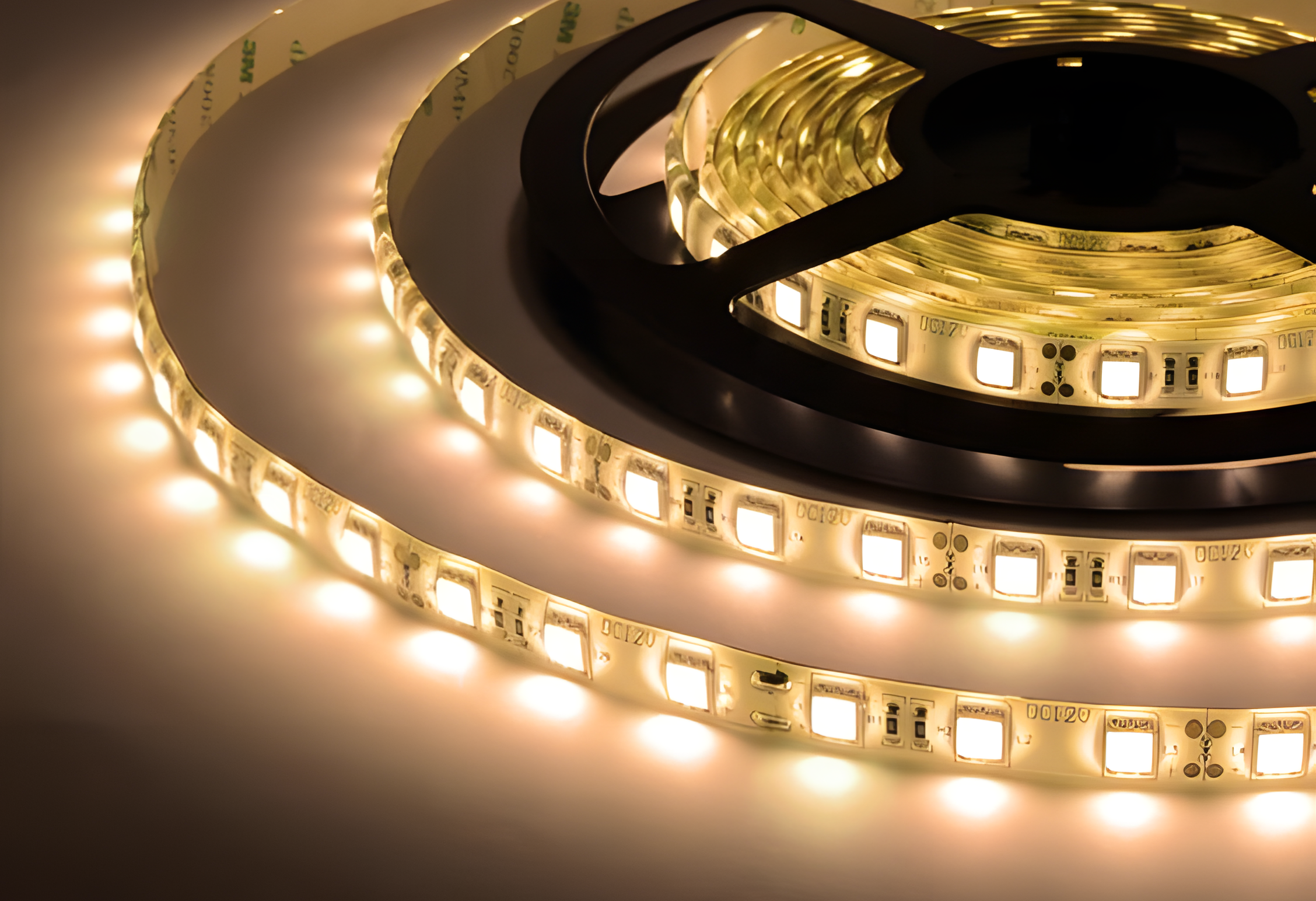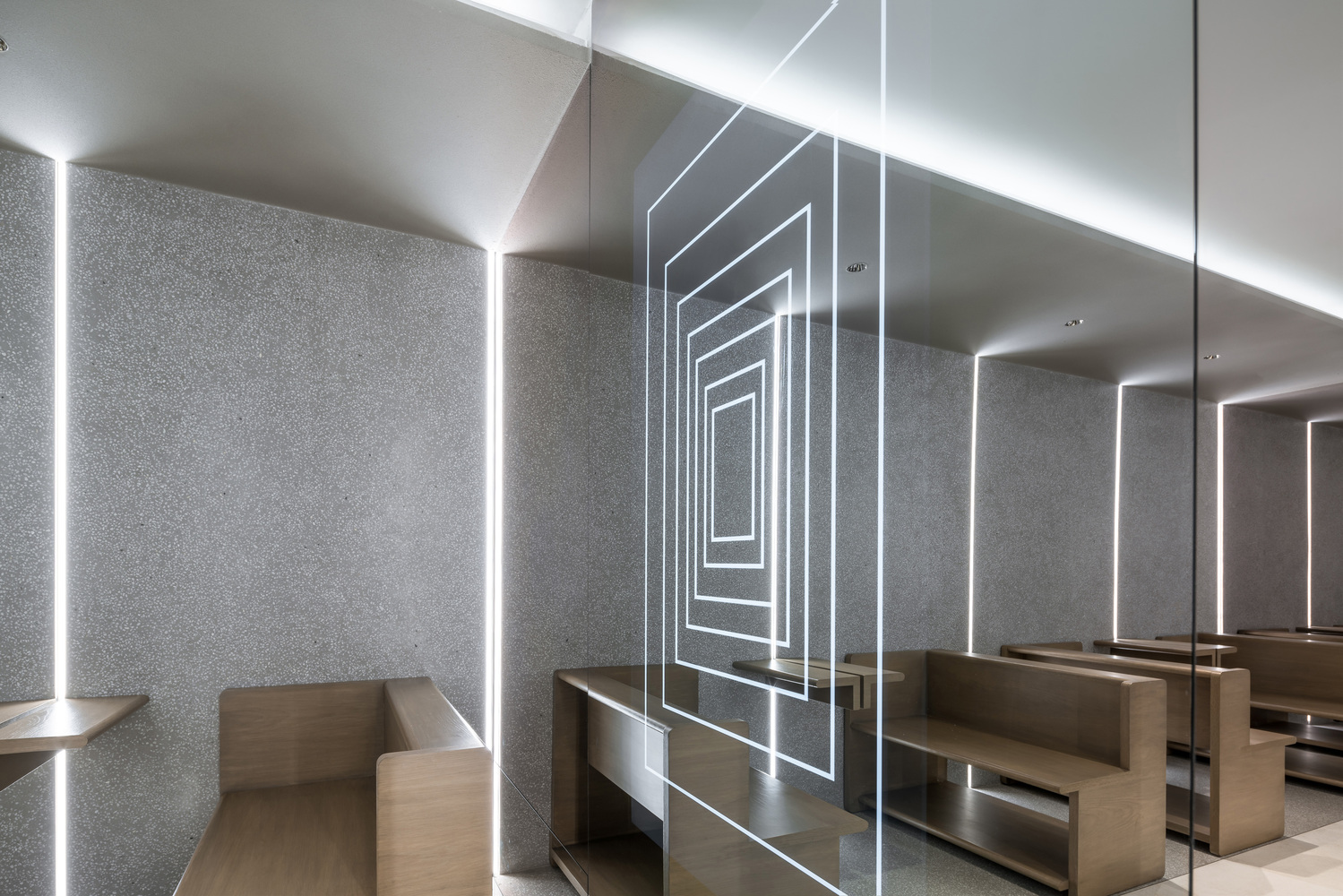
不知道您有沒有發現,在之前的文章中,我們經常只提到LED燈?無論是在生活中還是工作場所,LED燈隨處可見。但您是否真的了解,為什麼LED燈能夠如此普及?
對於從事燈光領域的人來說,如何在節能和性能之間找到平衡,並同時滿足設計和實用需求,一直是一個棘手的問題。
傳統燈具雖然有其優勢,但在能效、壽命和環保方面存在諸多不足。而LED燈的出現,正好解決了這些痛點。LED燈的受歡迎,不僅僅是因為它節能、壽命長,還因為它在多種應用場景中能夠增添許多有趣的元素。
那麼,到底是什麼因素推動了LED燈的崛起,使其成為當今照明領域的「明星」?今天,就來講一講LED燈興起的背後故事吧!
Have you ever noticed that in our previous articles, we often mention LED lights? Whether in daily life or at work, LED lights are everywhere. But do you really understand why LED lights have become so widespread?
For those working in the lighting field, finding a balance between energy efficiency and performance while meeting both design and practical needs has always been a challenging issue.
Traditional lighting fixtures, while having their advantages, fall short in terms of energy efficiency, lifespan, and environmental friendliness. The advent of LED lights has precisely addressed these pain points. The popularity of LED lights is not only due to their energy efficiency and long lifespan but also because they add many interesting elements to various application scenarios.
So, what factors have driven the rise of LED lights, making them the “star” of today’s lighting field? Today, let’s delve into the story behind the rise of LED lights!
Origins of Electric Lighting
電燈起源
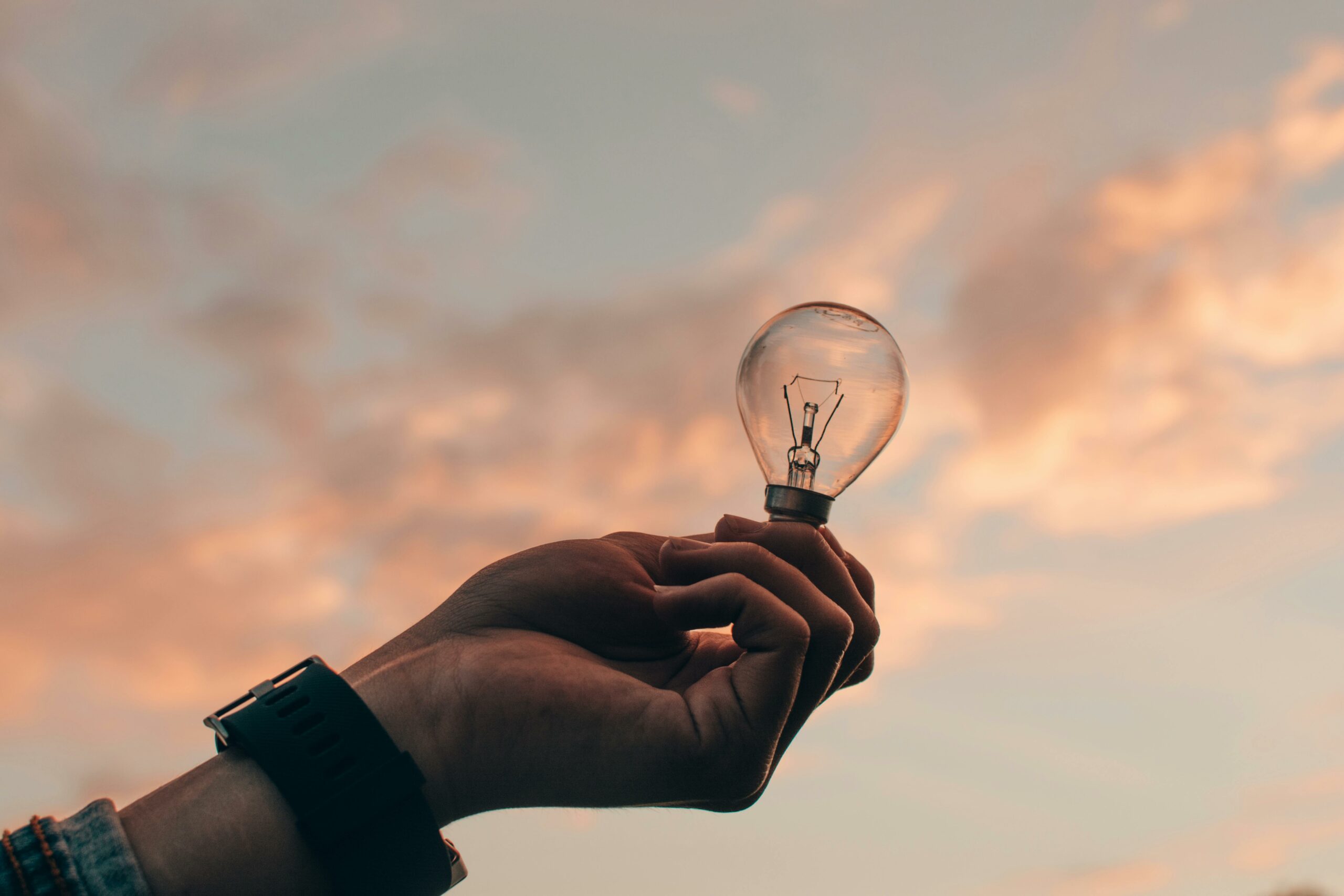
燈光技術的發展經歷了幾個重要的階段。早在19世紀末期,白熾燈的發明開啟了電燈的時代。
The development of lighting technology has gone through several important stages. As early as the late 19th century, the invention of the incandescent lamp marked the beginning of the era of electric lighting.
白熾燈泡 / 竹絲燈 / 鎢絲燈
1854 年,亨利·戈培爾成功製作出用電發光的白熾燈泡,雖然他未獲得正式專利認可,但這一技術為後來的發展奠定了基礎。
稍晚由取得專利的托馬斯·愛迪生於1879年研製出改良後、具有商業化潛力的碳化竹絲燈,並在1880年代全球普及。
最後,美國通用電氣公司旗下的物理學家威廉·柯立芝針對燈絲用料進一步改良,在1910年成功以低廉成本量產鎢絲燈泡,鎢絲自此一直作為白熾燈的製作原料,未再更改。直到光管、LED燈的出現,才被逐漸取代電燈泡的地位。
鹵素燈
鎢絲燈優點在於發光連續均勻、顯色性佳,但耗電量大、壽命短,且鎢絲昇華並凝結在玻璃殼上,使玻璃容易變黑。
1930年代,鹵素燈作為白熾燈的改良版本出現,通過添加鹵族元素,其亮度可提高1.5倍,使用壽命也比普通白熾燈長2至3倍。
1959年,美國通用電氣公司推出商業化的鹵素燈泡,其高效率和長壽命,以及利用鹵鎢循環原理,成功解決玻璃變黑的問題,使其特別適用於汽車和舞台照明。
水銀蒸氣燈 / 螢光燈
1901年,彼得·庫珀·休伊特發明了水銀蒸氣燈,這是早期螢光燈的前身,最初用於工業和商業照明。
20世紀70年代的石油危機推動了節能燈泡的需求,1976年,奇異公司的愛德華·E·哈默發明了現代緊湊型螢光燈(CFL),但由於建造工廠費用高昂,這項發明最終被擱置。雖然未能大規模商業化,但為後來的技術發展鋪平道路。
Incandescent Lamp / Carbon Filament Lamp / Tungsten Filament Lamp
In 1854, Heinrich Goebel successfully created an incandescent lamp using electricity to produce light. Although he did not receive formal patent recognition, this technology laid the foundation for future developments.
Later, Thomas Edison, who obtained the patent, developed an improved carbonized bamboo filament lamp in 1879, which had commercial potential and gained worldwide popularity in the 1880s.
Finally, in 1910, William Coolidge, a physicist at General Electric, further improved the filament material and successfully mass-produced tungsten filament lamps at a low cost. Since then, tungsten has remained the primary material for incandescent lamps until they were gradually replaced by fluorescent and LED lights.
Halogen Lamp
The tungsten filament lamp had advantages such as continuous and uniform light emission and good color rendering, but it consumed a lot of electricity, had a short lifespan, and tungsten sublimation caused the glass shell to blacken.
In the 1930s, the halogen lamp emerged as an improved version of the incandescent lamp. By adding halogen elements, its brightness increased by 1.5 times, and its lifespan was 2 to 3 times longer than ordinary incandescent lamps.
In 1959, General Electric commercialized the halogen lamp. Its high efficiency and long life, combined with the halogen-tungsten cycle principle that prevented glass blackening, made it particularly suitable for automotive and stage lighting.
Mercury Vapor Lamp / Fluorescent Lamp
In 1901, Peter Cooper Hewitt invented the mercury vapor lamp, the predecessor of the early fluorescent lamp, initially used for industrial and commercial lighting.
The oil crisis of the 1970s spurred the demand for energy-saving light bulbs. In 1976, Edward E. Hammer of General Electric invented the modern compact fluorescent lamp (CFL). However, due to the high cost of building factories, this invention was ultimately shelved. Although it did not achieve large-scale commercialization, it paved the way for future technological developments.
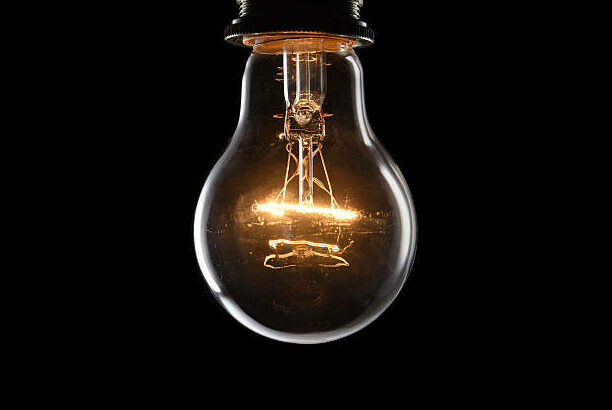
白熾燈泡
INCANDESCENT
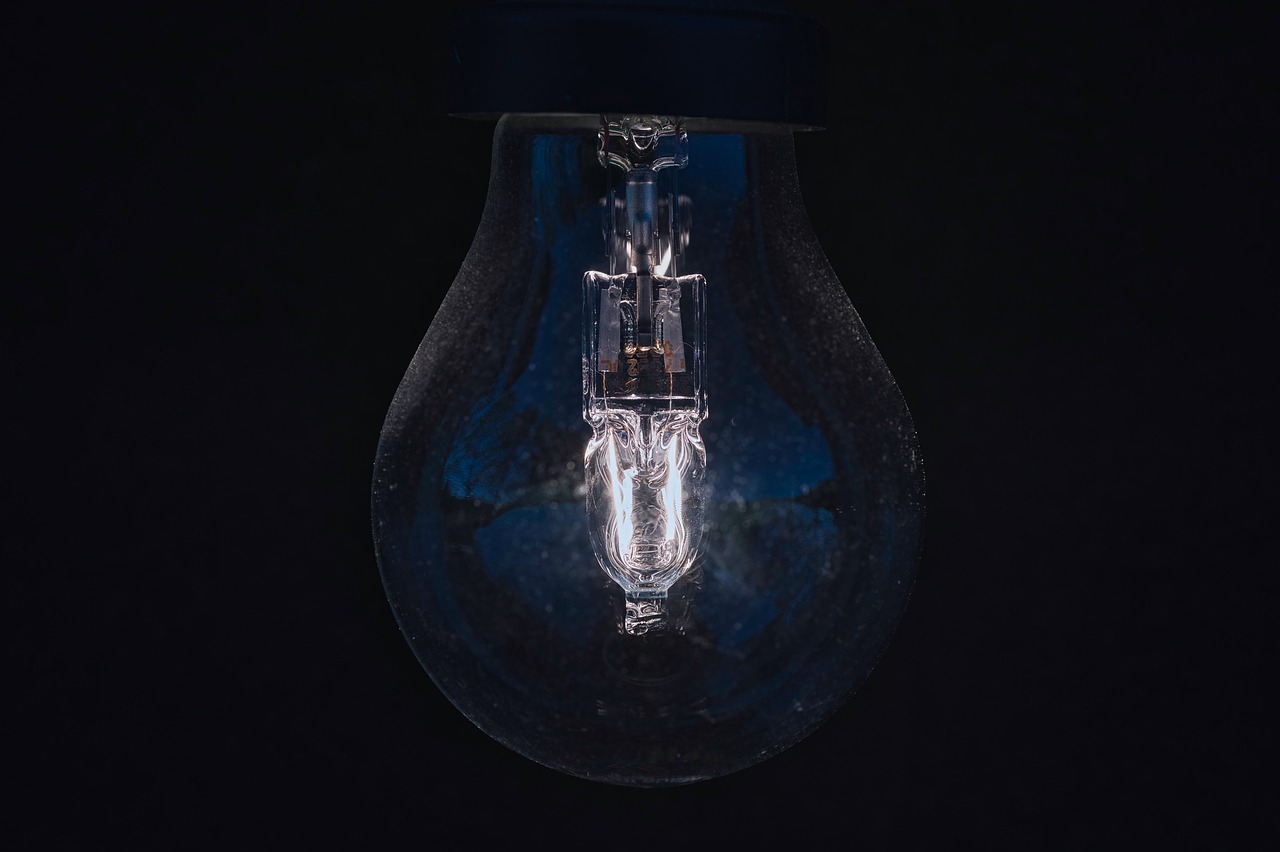
鹵素燈
HALOGEN
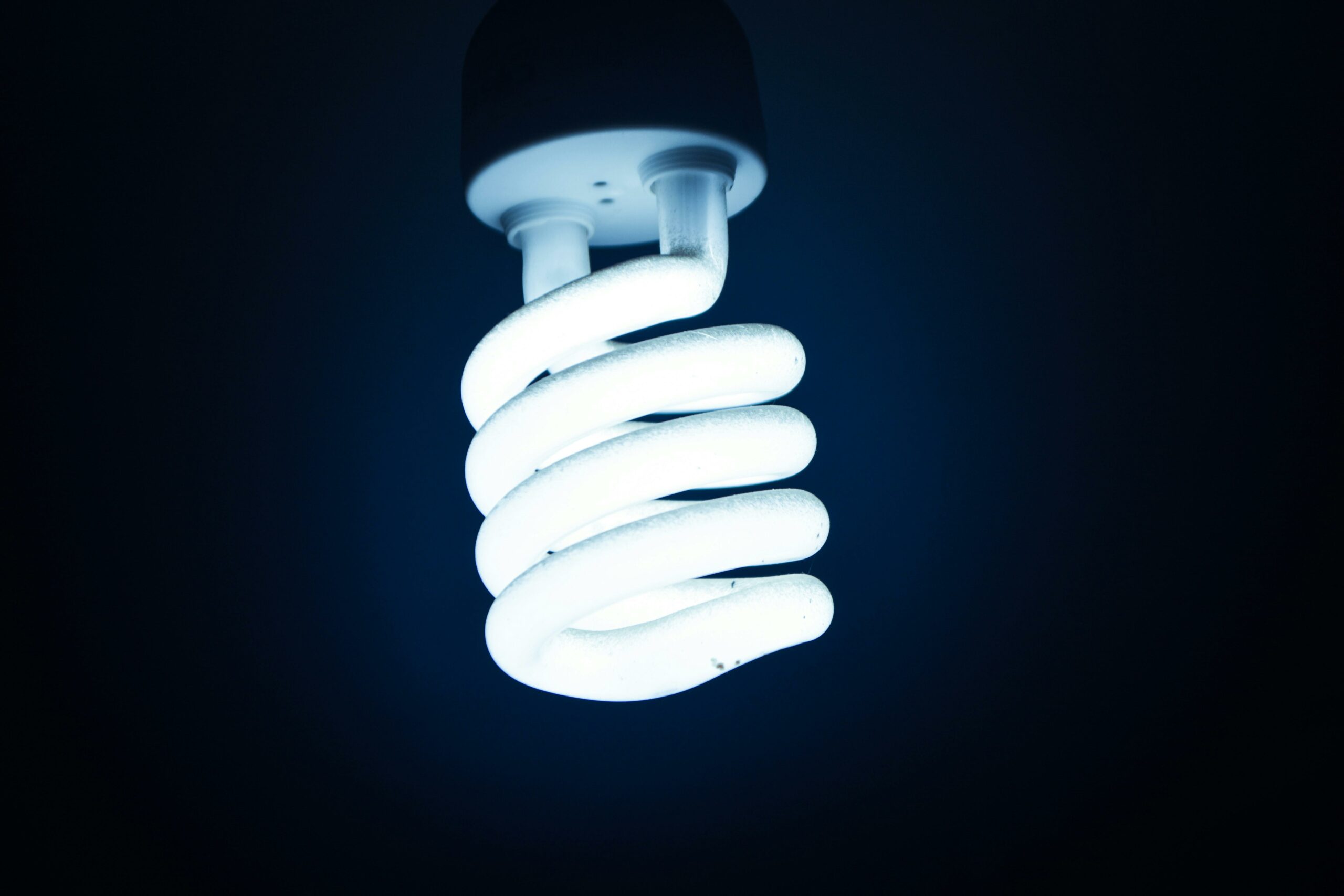
一體式螢光燈
CFL
LED燈的起源
1962年,第一顆紅色LED由尼克·霍洛尼亞克在美國發明。然而,早期LED只能發出單一顏色的光,且效率低,主要用於指示燈和顯示屏等領域。
直到1990年代中期,藍色和白色LED的問世,才使LED成為可靠的通用照明光源。
2010年代起,汽車與鐵路車輛的燈具也逐漸使用LED燈,一些高價車款的頭燈也逐漸以LED燈取代傳統鹵素燈以及高強度氣體放電燈(HID燈)。
The Origin of LED Lamps
In 1962, Nick Holonyak invented the first red LED in the United States. However, early LEDs could only emit single-color light and were inefficient, mainly used for indicators and displays.
It wasn’t until the mid-1990s, with the advent of blue and white LEDs, that LEDs became a reliable source of general lighting.
Since the 2010s, LED lamps have been increasingly used in automotive and railway lighting. High-end car models have gradually replaced traditional halogen lamps and high-intensity discharge lamps (HID lamps) with LED headlights.

當白熾燈在螢光燈的陰影中慢慢退去時,照明技術的潮流卻在不斷推進。如今,LED燈以其優勢逐漸嶄露頭角,成為當今照明界的主流技術。
As incandescent lamps slowly faded into the shadows of fluorescent lamps, the trend of lighting technology continued to advance. Today, LED lamps, with their advantages, have gradually emerged and become the mainstream technology in the lighting industry.
How LED Lamps Emit Light
LED燈的發光原理

LED燈是利用發光二極體(LED)作為光源的燈具,屬於固態照明技術。當電流通過LED晶片時,會激發其內部的電子-空穴對,產生光子並發光。
LED lamps use light-emitting diodes (LEDs) as their light source, which falls under solid-state lighting technology. When current passes through an LED chip, it excites the internal electron-hole pairs, producing photons and emitting light.
何謂 電子-空穴對 ?
LED為固態發光體(SSL)在通電後正極通過P型半導體產生正電子,N型半導體通過負電而帶負電子,電流從P極(正極)流向N極(負極),兩軍(正負電子)相見,就產生了光(能量)。
What is an Electron-Hole Pair?
LEDs, being solid-state light emitters, operate when the positive electrode produces positive electrons (holes) through a P-type semiconductor, and the negative electrode produces negative electrons through an N-type semiconductor. The current flows from the P-side (positive) to the N-side (negative), and when these electrons and holes meet, they release energy in the form of light.
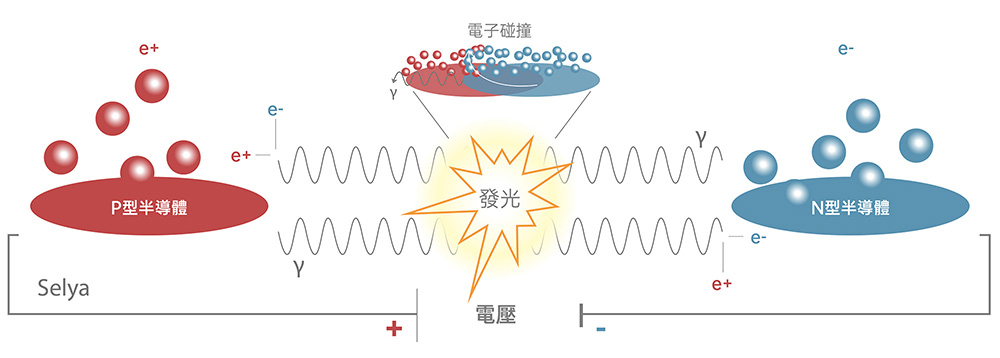
與傳統的白熾燈和鹵素燈不同,LED不需要加熱就能發光,這使得其發光效率高,可達每瓦100至200流明,遠超過白熾燈和鹵素燈。美國科瑞Cree等公司甚至宣稱其LED燈效率可達到每瓦300流明。
Unlike traditional incandescent and halogen lamps, LEDs do not require heating to emit light. This results in high luminous efficiency, reaching 100 to 200 lumens per watt, far surpassing incandescent and halogen lamps. Companies like Cree even claim their LEDs can achieve up to 300 lumens per watt.
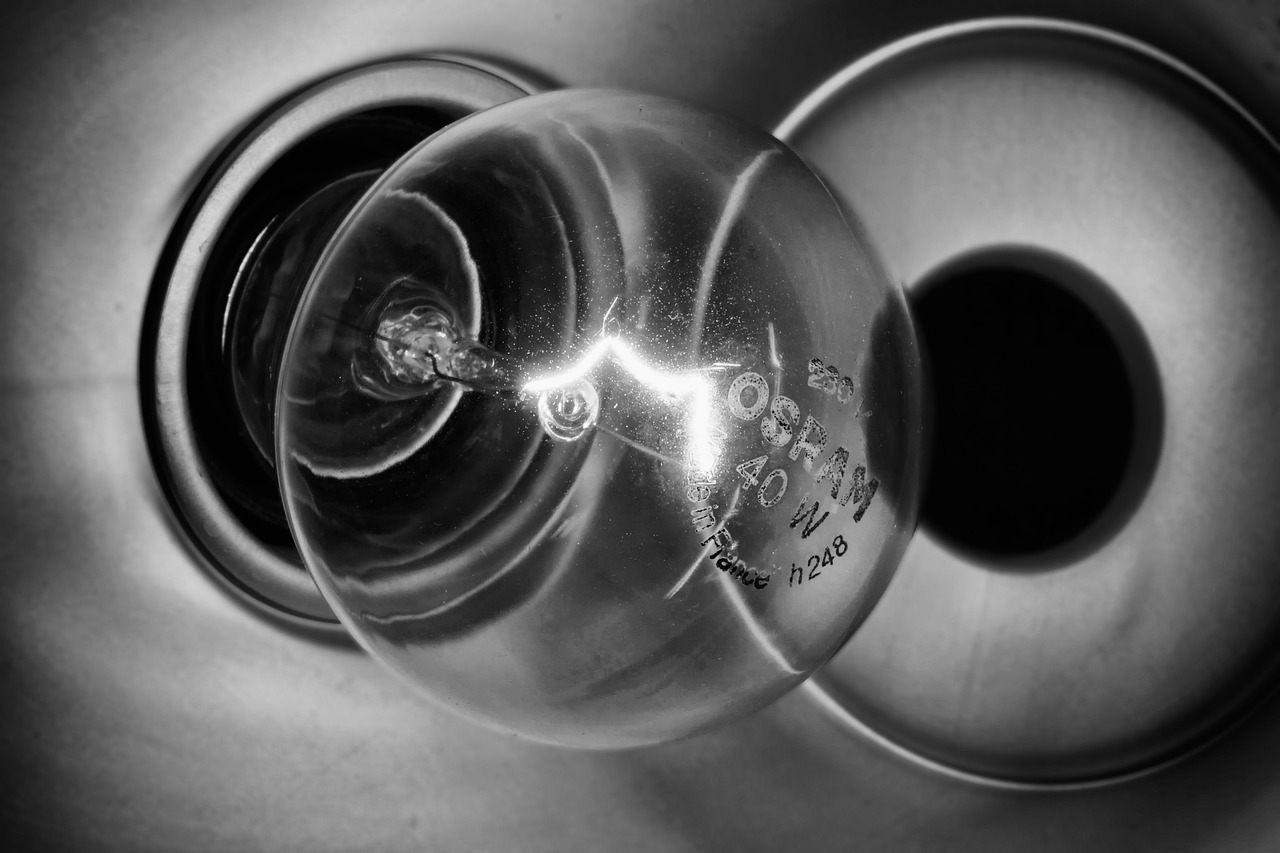
傳統燈泡
利用電流通熱,使鎢絲發光。
Uses electric current to heat tungsten filament, causing it to emit light.

LED燈
電流通過LED晶片,產生光子發光。
Electric current passes through LED chip, generating photons to emit light.
LED燈的內部結構包括多顆LED晶片、驅動電路、散熱片和光學零件。由於單顆LED晶片發光效果比傳統照明光源低,通常需要多顆LED晶片封裝在一個燈泡中,以解決單顆LED光度不足的問題。
LED燈內的驅動電路將日常使用的交流電轉為直流電,並控制電壓和電流供應,以保護LED不被過高的電壓損壞。散熱片則用來散熱,以防止LED過熱而影響其壽命和性能。
The internal structure of an LED lamp includes multiple LED chips, a driver circuit, a heat sink, and optical components. Since a single LED chip’s light output is lower than traditional light sources, multiple LED chips are often packaged in one lamp to address this issue.
The driver circuit inside an LED lamp converts the standard AC power to DC power and controls the voltage and current to protect the LEDs from damage due to high voltage. The heat sink helps dissipate heat, preventing the LEDs from overheating and affecting their lifespan and performance.
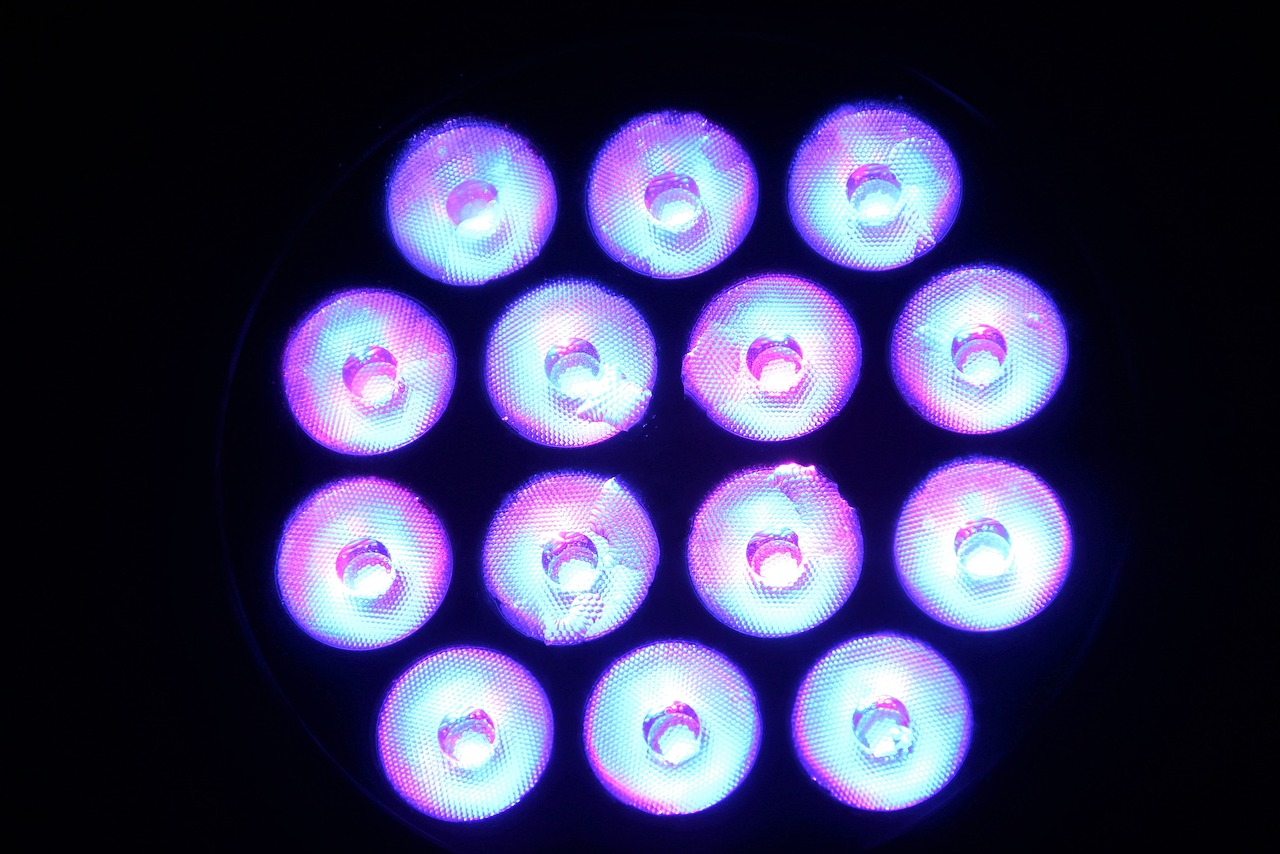
LED晶片
LED Chip
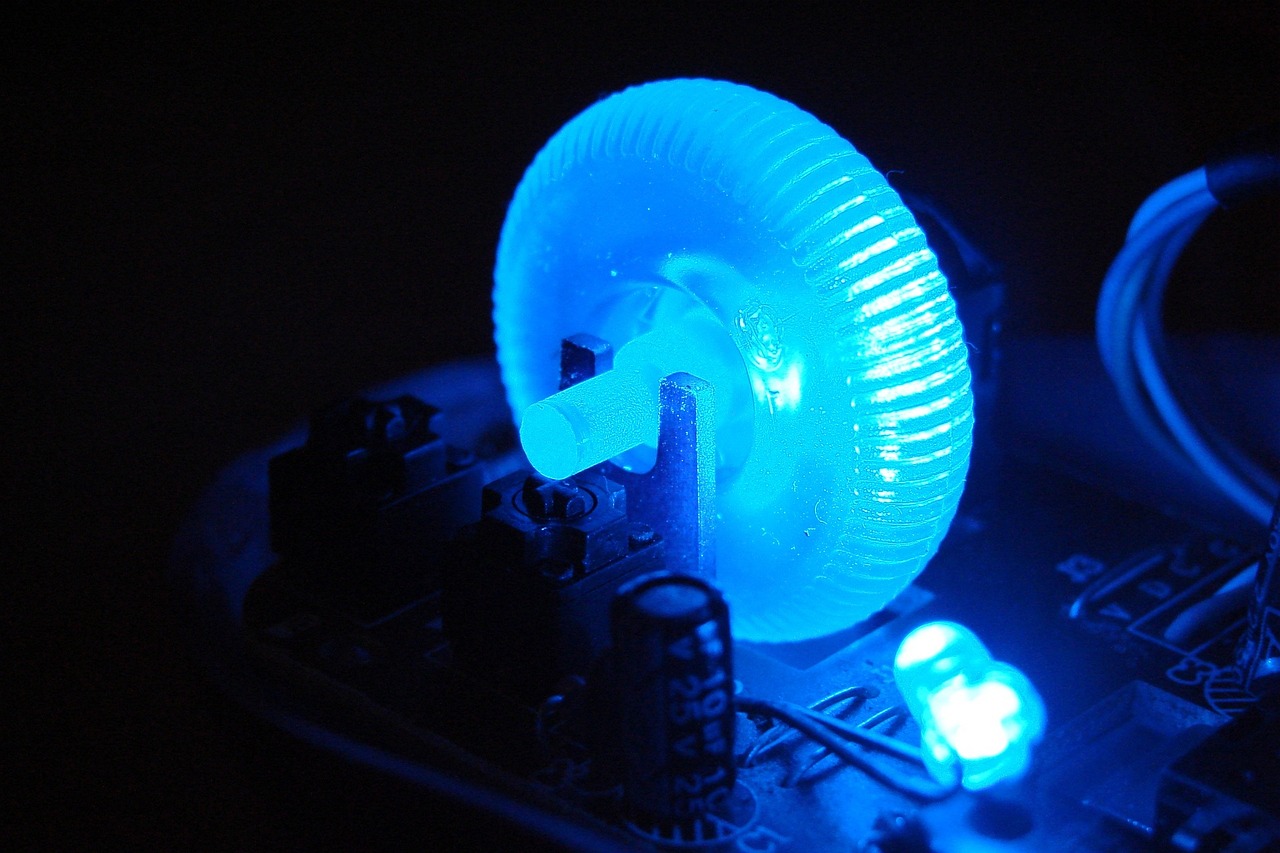
驅動電路
Driver Circuit

光學零件
Optical Components
LED燈能發出不同顏色的光,這取決於LED所使用的半導體材料和結構。一般照明會使用白光,有兩種方法可製造白光LED:將紅、綠和藍三色的LED混合,或用磷轉變光的顏色。
前者成本高,但光色可調;後者成本較低,且演色性指數 (CRI) 高,但光效會略有下降。
LEDs can emit different colors of light depending on the semiconductor material and structure used. For general lighting, white light is typically used, which can be produced in two ways: by mixing red, green, and blue LEDs or by using phosphor to convert light colors.
The former method is more costly but allows for adjustable light colors, while the latter is cheaper, offers a high color rendering index (CRI), but slightly reduces luminous efficiency.
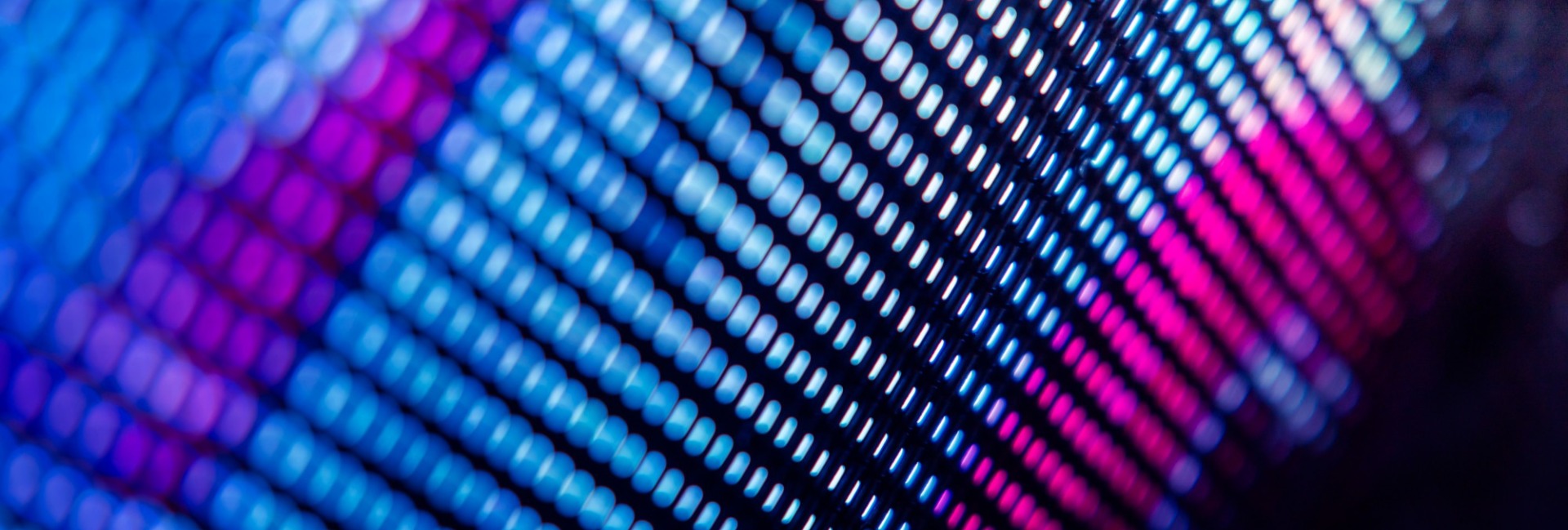
現今,高功率、高光度的LED晶片陸續推出,LED燈還可根據不同的材料和結構設計,為照明設計帶來更多可能性,這些優勢使得LED燈泡逐漸取代其他光源的趨勢日益明顯。
Nowadays, high-power, high-brightness LED chips are being continuously developed. LED lamps can be designed with different materials and structures, offering more possibilities for lighting design. These advantages are making LED lamps increasingly replace other light sources.
Challenges of LED Lamps
LED燈不能忽視的問題

從家居照明到商業照明,從戶外照明到交通指示,LED燈許多的優勢在生活應用上已經非常成熟:
節能環保
LED燈的能源效率非常高,相較於高壓鈉燈和水銀燈,可以節省約50-90%的電力消耗,為用戶帶來顯著的電費節省,並減少碳排放。再加上LED光源無汞、無紫外線輻射,對人體健康和環境更加友好。
長壽穩定
LED燈的使用壽命長,一般可達10萬小時以上,是高壓鈉燈的5倍、水銀燈及傳統白熾燈的10倍以上,維護成本大大降低,適合用於需要長期穩定運行的場合。
可塑性高
LED燈體積小巧,可以靈活設計成各種造型,用較小的反射鏡和透鏡,就能輕而易舉地把光分佈平均,甚至不會減低能源效益。且不易破損、可調光的特性,為照明空間營造更多可能性。
安全無害
LED燈使用低壓電電流,安全性高,在傳統12-24V之間操作,不會對人體造成危害。
From household and commercial lighting to outdoor illumination and traffic signals, the many advantages of LED lamps have become well-established in various applications:
Energy Efficiency and Environmental Friendliness
LED lamps are highly energy-efficient, saving approximately 50-90% of electricity consumption compared to high-pressure sodium and mercury lamps. This results in significant electricity cost savings and reduced carbon emissions. Additionally, LED light sources contain no mercury and emit no ultraviolet radiation, making them more friendly to human health and the environment.
Longevity and Stability
LED lamps have a long lifespan, typically exceeding 100,000 hours, which is five times longer than high-pressure sodium lamps and more than ten times that of mercury and traditional incandescent lamps. This greatly reduces maintenance costs, making LED lamps suitable for applications requiring long-term, stable operation.
High Flexibility
LED lamps are compact and can be designed in various shapes. With small reflectors and lenses, they can distribute light evenly without reducing energy efficiency. Their durability and dimmable features create more possibilities for lighting design.
Safety
LED lamps operate on low-voltage current, typically between 12-24V, posing no harm to humans and providing high safety.

然而,逐步成為照明領域的主導技術的LED燈,也有一些劣勢是需要注意的:
散熱需求高
LED燈需要良好的散熱設計,否則在高溫環境中使用會導致光衰。其需要變壓驅動,電源壽命會受熱量影響而衰減。散熱裝置會使燈具變重、體積變大,不利於某些場域設計應用。
潮濕環境易色差
LED燈適用於低溫環境,若放在潮濕環境中,可能產生色溫偏移,而防水設計更是增加成本。
較廉價的燈具,品質無法保證
不良設計的LED燈在損耗後難以回收利用,不符合環保要求。市場上優劣品參雜,消費者難以判定品質,一些廠商的保證也僅是口號。
However, while LEDs are becoming the dominant lighting technology, some drawbacks still need attention:
High Heat Dissipation Requirements
LED lamps require good heat dissipation. If used in high-temperature environments without proper heat management, light decay can occur. LEDs need a driver to operate, and the lifespan of the power supply can be reduced by heat. Heat sinks can make the fixtures heavier and bulkier, which may not be ideal for certain applications.
Susceptibility to Color Shift in Humid Environments
LEDs perform well in low-temperature environments but may experience color temperature shifts in humid conditions, increasing the cost due to the need for waterproofing.
Quality Assurance
Poorly designed LED lamps are difficult to recycle after wear, failing to meet environmental requirements. With varying quality in the market, consumers may struggle to judge the products’ quality, and some manufacturers’ guarantees may be empty promises.
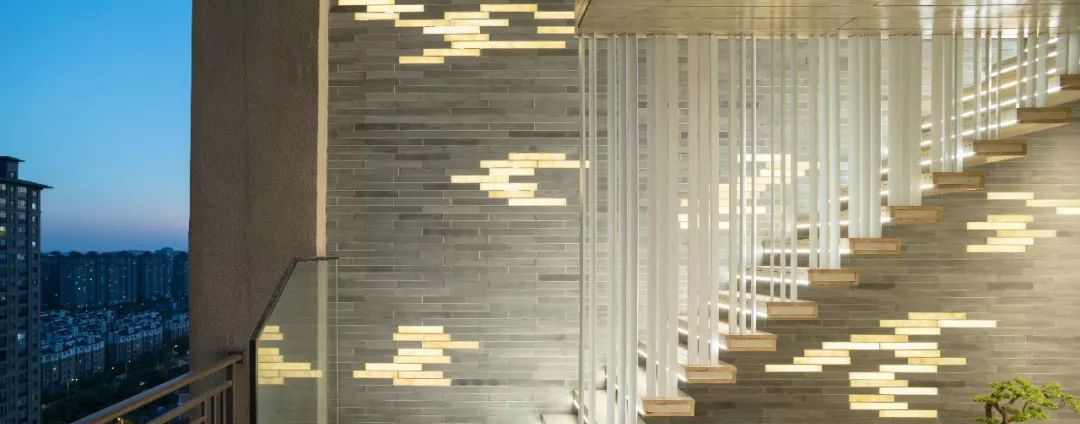
任何成熟的技術都會有一些缺點,LED燈的缺陷可能會讓設計師在選擇時有所擔心。
作為專業的燈光規劃設計公司,我們擁有豐富的專業知識和經驗,不僅能夠篩選出優質產品,還能減少中間差價成本,提供高品質且價格合理的照明解決方案。
我們還提供全面的照明規劃和售後維修服務,確保每一個照明項目都能夠達到設計師的需求和期望。我們的專業能力和周到服務,是能讓設計師們無後顧之憂,安心使用我們的產品。
Any mature technology comes with its own set of challenges, and the shortcomings of LED lamps might cause concerns for designers when making their choices.
As a professional lighting design and planning company, we leverage our extensive expertise and experience not only to select high-quality products but also to minimize intermediary costs, providing top-notch and cost-effective lighting solutions.
In addition, we offer comprehensive lighting planning and after-sales maintenance services to ensure that every lighting project meets designers’ needs and expectations. Our professional skills and attentive service allow designers to use our products with complete peace of mind.
The Importance in Practical Applications
在實際應用中的重要性
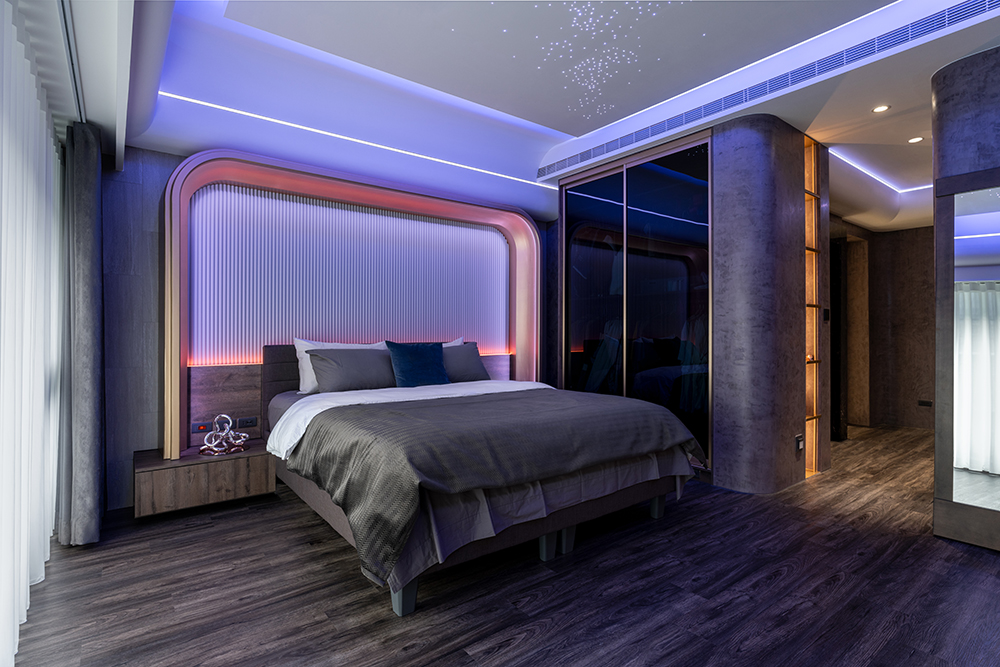
家居照明
LED燈提供豐富的色彩選擇,營造舒適溫馨的居家氛圍。
LED lamps offer a wide range of color options, creating a comfortable and cozy home environment.
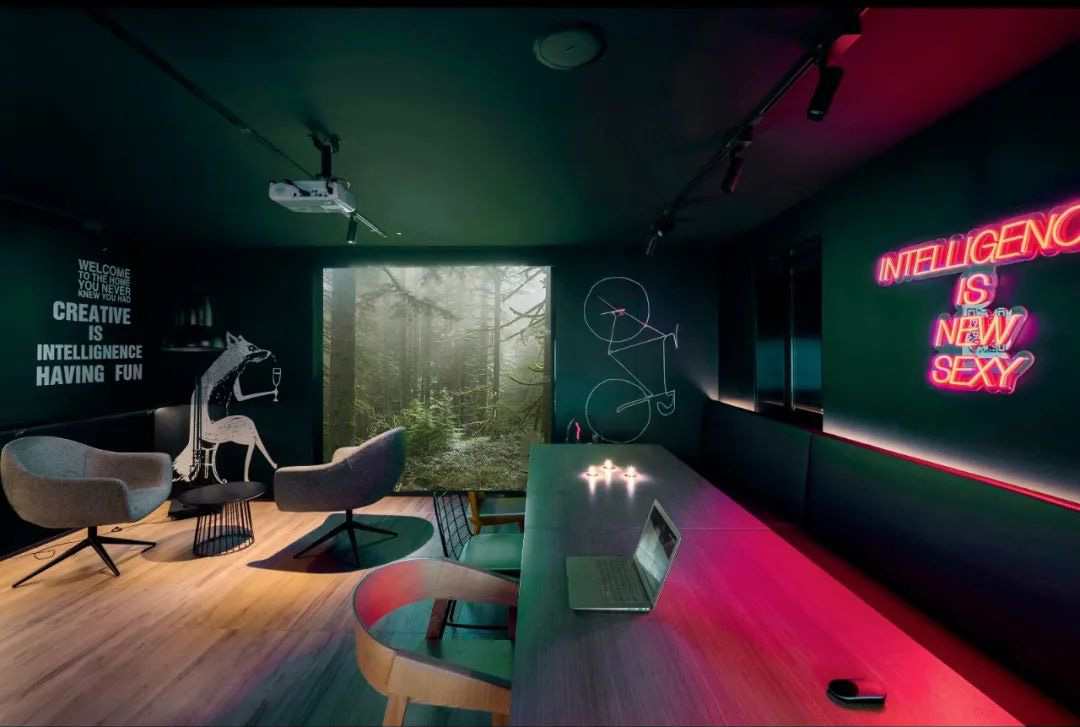
商業照明
LED燈根據不同場景需求,提供精準照明效果,提升商業空間視覺體驗。
LED lamps offer precise lighting for various commercial settings, enhancing visual experiences.

戶外照明
LED燈耐候性強、能耗低,廣泛應用於街道、公園、體育場等場所。
LED lamps are durable and energy-efficient, ideal for streets, parks, stadiums, and outdoor areas.

交通指示
LED燈亮度高、視線清晰,成為交通信號燈和指示牌的首選。
With high brightness and clear visibility, LED lamps are the top choice for traffic signals and signs.
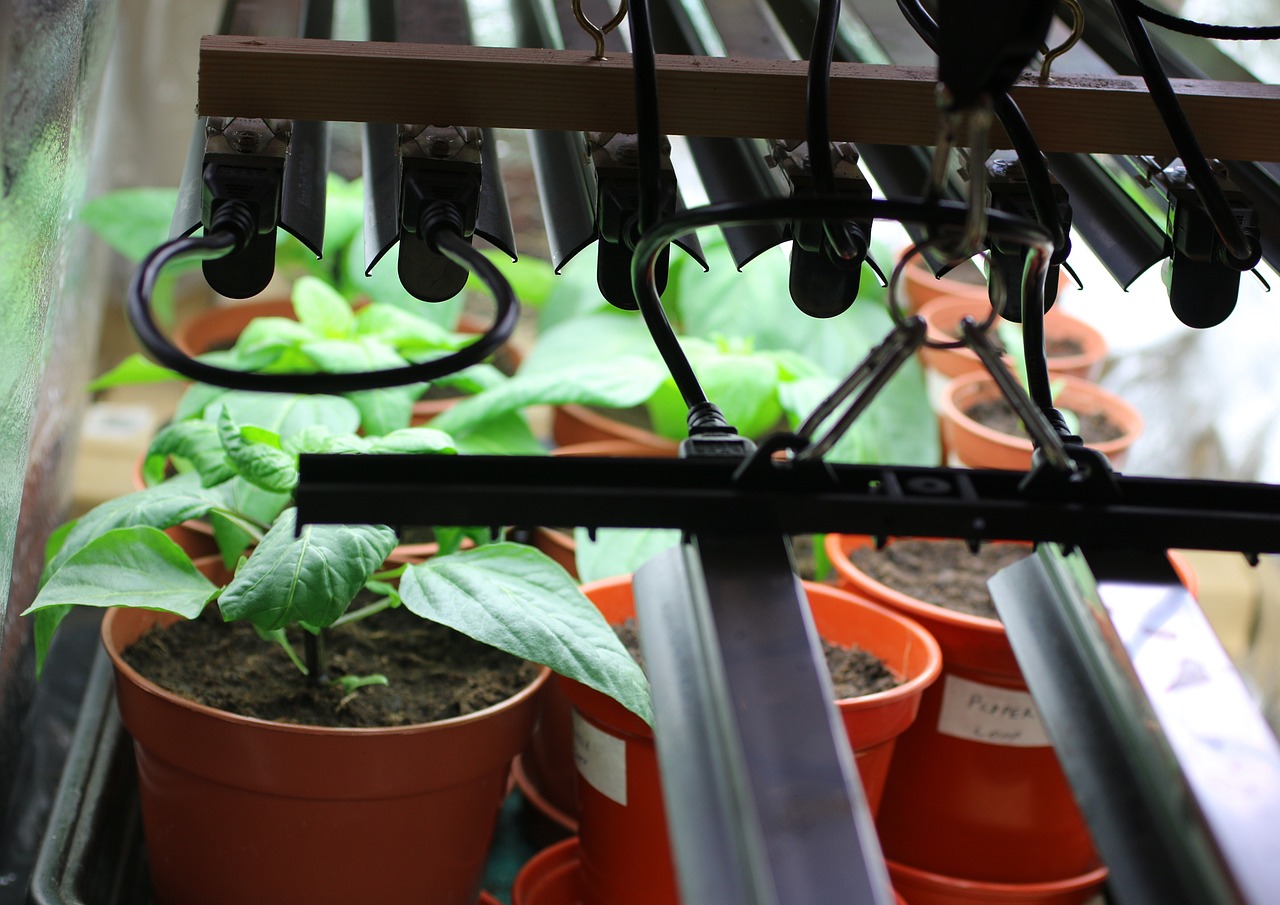
植物照明
LED燈為植物提供最佳光照條件,發熱少能減少蒸散作用,從而減少灌溉次數,促進生長。
LED lamps provide optimal lighting for plants, with minimal heat emission reducing transpiration, promoting growth.
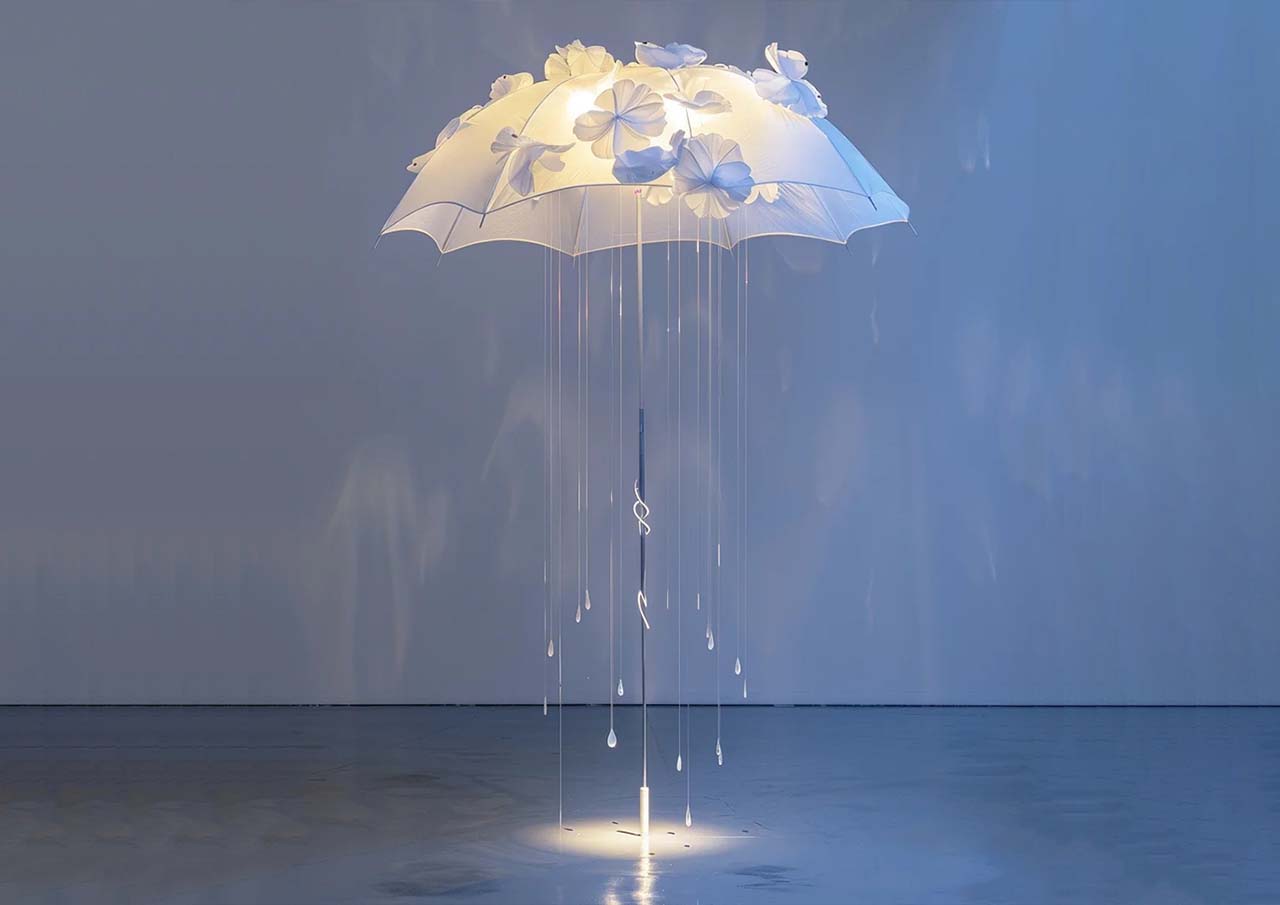
藝術燈光裝置
隨著技術的不斷創新,LED還可應用於藝術裝置,發揮其獨特優勢。
Continual technological innovation enables LEDs to be used in artistic installations, showcasing their unique advantages.
Contemporary Mainstream of LED Lighting
當代照明主流LED燈

LED燈之所以成為照明領域的主流趨勢,關鍵在於其優異的性能和廣泛的應用前景。LED燈具有高效節能、長久使用、無環境污染等優勢,無疑是未來照明市場的主角。
在LED市場上,我們常見到許多知名品牌,例如美國科瑞(CREE)、德國歐司朗(OSRAM)以及中國三安。每間燈具製造廠都可視為「拼裝場」,從芯片廠獲得晶片後,將其交由封裝廠進行封裝,最終再送到燈具廠進行組裝。雖然設計師可能偏好使用知名品牌,但最終的品質仍取決於封裝廠的供貨品質。
因此,在選擇LED燈具時,不僅需要考量品牌,也需要關注產品的整體品質和生產過程。這樣可以確保所選的LED燈具在實際使用中能夠達到最佳性能,提供舒適的照明體驗。
對於用戶來說,選擇LED燈不僅為家庭或商業空間帶來更舒適的照明體驗,同時也能大幅減少電費開支,並為環境保護盡一份心力。
身處照明領域多年,我們深刻理解市場動態和技術需求。憑藉豐富的專業經驗,我們不僅提供高品質的照明產品,還致力於篩選優質產品,優化成本,確保每個照明方案都能滿足設計師的需求。此外,我們還提供全面的照明規劃和完善的售後服務。
隨著LED技術的不斷進步,整個照明行業正邁向更高效能和環保的發展方向。我們致力於緊跟這一趨勢,通過提供先進的照明解決方案,滿足客戶對實用性和環保的雙重需求,為照明市場帶來更多創新與價值。
LED lighting has become a mainstream trend in the illumination industry due to its superior performance and extensive application prospects. LED lamps are energy-efficient, long-lasting, and environmentally friendly, making them the leading choice for future lighting markets.
In the LED market, we often see renowned brands such as Cree (USA), OSRAM (Germany), and Sanan Optoelectronics (China). Each lighting strip manufacturer acts as an “assembly plant,” obtaining chips from chip manufacturers, having them packaged by packaging plants, and finally assembling the finished product. Although designers may prefer using well-known brands, the final quality still depends on the packaging plant’s supply quality.
For users, choosing LED lighting not only provides a more comfortable lighting experience for homes or commercial spaces but also significantly reduces electricity bills and contributes to environmental protection.
For the entire lighting industry, the continuous advancement of LED technology will drive the market towards more energy-efficient and environmentally friendly development.
希望本篇文章能幫助大家更深入地了解LED燈的技術、應用以及優缺點,讓您在不同的照明需求中,能做出更優的選擇。
I hope this articlehas provided you with a deeper understanding of the various aspects and advantages of LED lighting, helping you make more informed decisions for your diverse lighting needs.
封裝技術:SMD LED 與 COB LED
LED Chip TechnologiesLED芯片技術 What …
色容差SDCM
A Brief Discussion on Color Temper…


